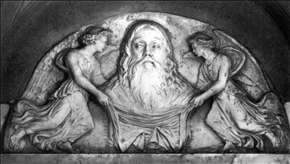Italian sculptor. His grandfather, Giovanni di Gante, was a stone-carver, and his father, Pippo di Giovanni de Ghante da Pisa, who worked with
Donatello on the Brancacci monument in the Baptistery in Florence in 1426, was documented at the Vatican in 1431. This suggests that Isaia was taken to Rome as a youth. He was probably active as a sculptor before 1447, since
Filarete, who was forced to flee Rome at that date, mentioned Isaia in his Trattato.
Isaia s oeuvre is not easy to define, because the sculptures for which payments exist were all collaborative works. However, a corpus has been assembled, based in part on the style of one of the lunette reliefs from the Tabernacle of St Andrew (Rome, Grotte Vaticane), a project on which he collaborated with Paolo Romano in 1463-64. Porcellio Pandone wrote a poem in his honour (Ad immortalitatem Isaiae Pisani marmorum celatoris) in which, in the tradition of humanist hyperbole, he compared him to Pheidias, Polykleitos and Praxiteles. Although his work has been called monotonous, the influence of late Roman sculpture on Isaia s style reflects the classicizing taste of his time.
If you want write a review , you have to be registered.
